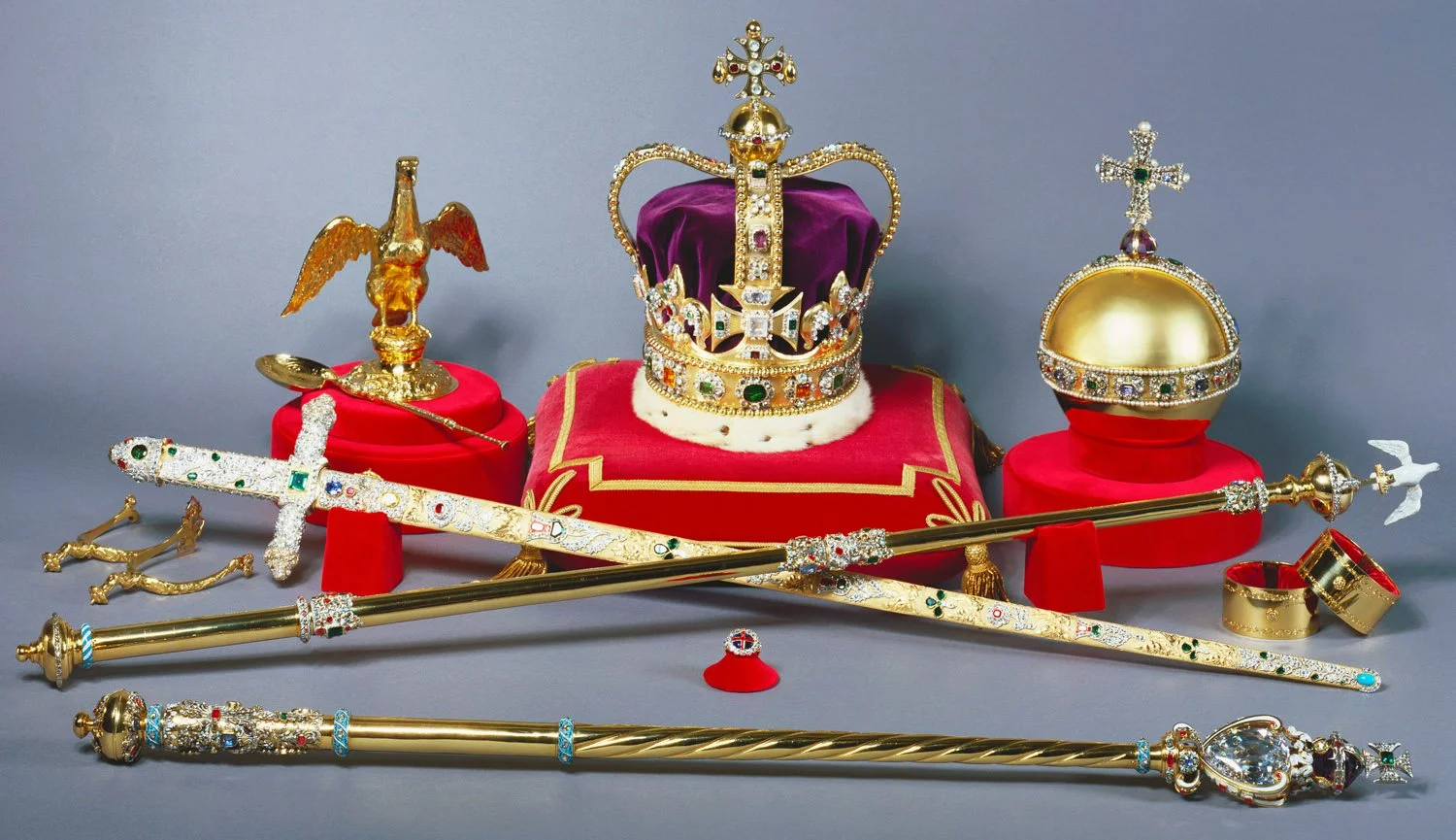Buckingham Palace has shared details of the Regalia that will be used at the coronation of King Charles nearly a month before the ceremony. The Coronation Regalia are sacred objects that symbolize the powers and responsibilities of the monarch and have played a central role in Coronation Services for hundreds of years.
The Regalia, part of the Royal Collection, are held in trust by the Monarch on behalf of the nation. The coronation service will take place on May 6th at Westminster Abbey, and in keeping with tradition, the Regalia will be used during the service.
ST Edward’s Crown
King Charles will be crowned with the historic St Edward’s Crown, which has been used since the coronation of King Charles II in 1661. The crown weighs about 2.2 kg (4 lb 12 ounces) and is made up of a solid gold frame set with rubies, amethysts, sapphires, garnet, topazes, and tourmalines. It also has a velvet cap with an ermine band. The St Edward’s Crown replaced an original crown believed to date back to the 11th century Anglo-Saxon king of England, Edward the Confessor.
Imperial State Crown
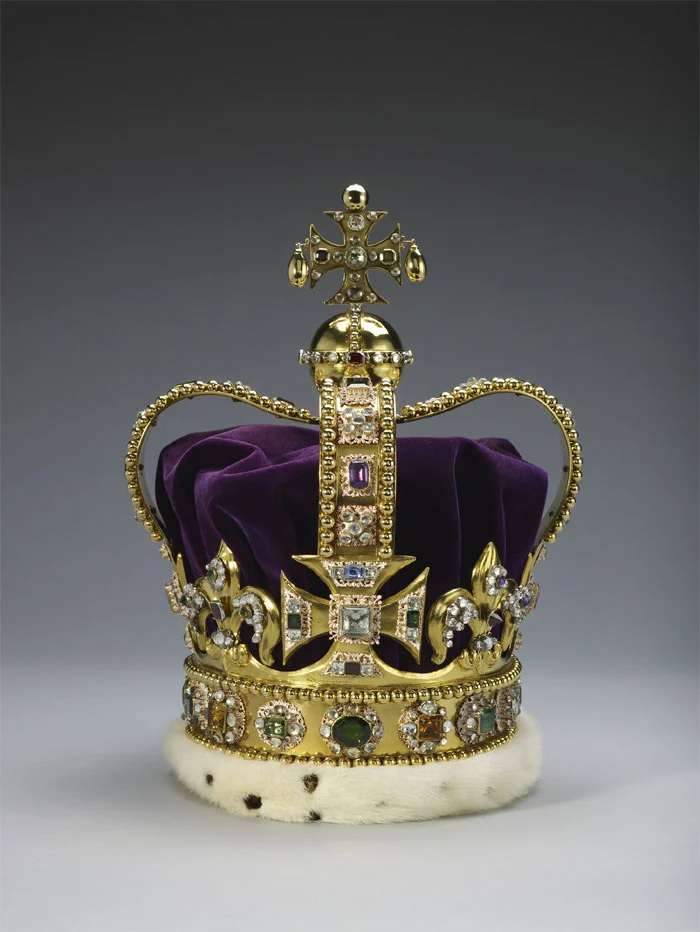
At the end of the service, King Charles will wear the Imperial State Crown, which was made for the coronation of his grandfather, George VI, in 1937. The crown weighs 1 kg (2.3 lb) and is set with 2,868 diamonds in silver mounts. It also features the 105-carat Cullinan II, the second biggest stone cut from the Cullinan Diamond, which was given by the government of the Transvaal in South Africa to Edward VII on his birthday in 1907. The crown also includes the large “Black Prince’s Ruby,” along with 17 sapphires, 11 emeralds, and 269 pearls.
Sovereign’s Sceptre with Cross
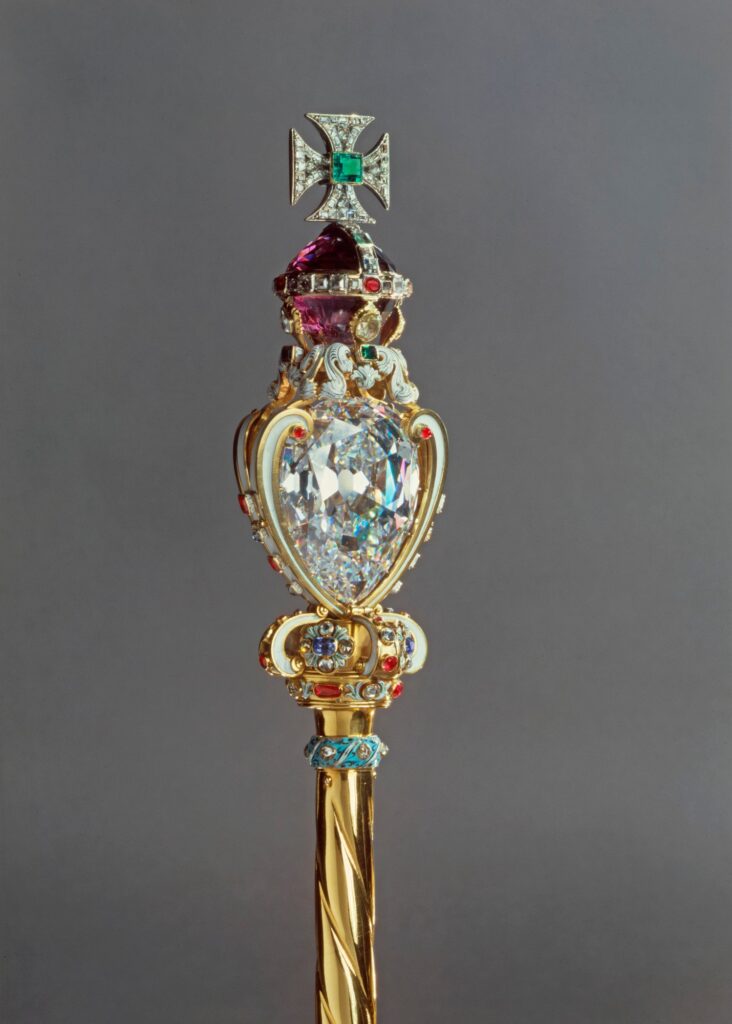
The Sovereign’s Sceptre with Cross is another important item of the Regalia. The Cullinan 1 diamond, also known as the Star of Africa, which weighs in at 530 carats and is the world’s largest colorless cut diamond, was set in the bejeweled golden scepter. It has been used in every coronation since 1661 and represents the sovereign’s temporal power and is associated with good governance.
Sovereign’s Sceptre with Dove
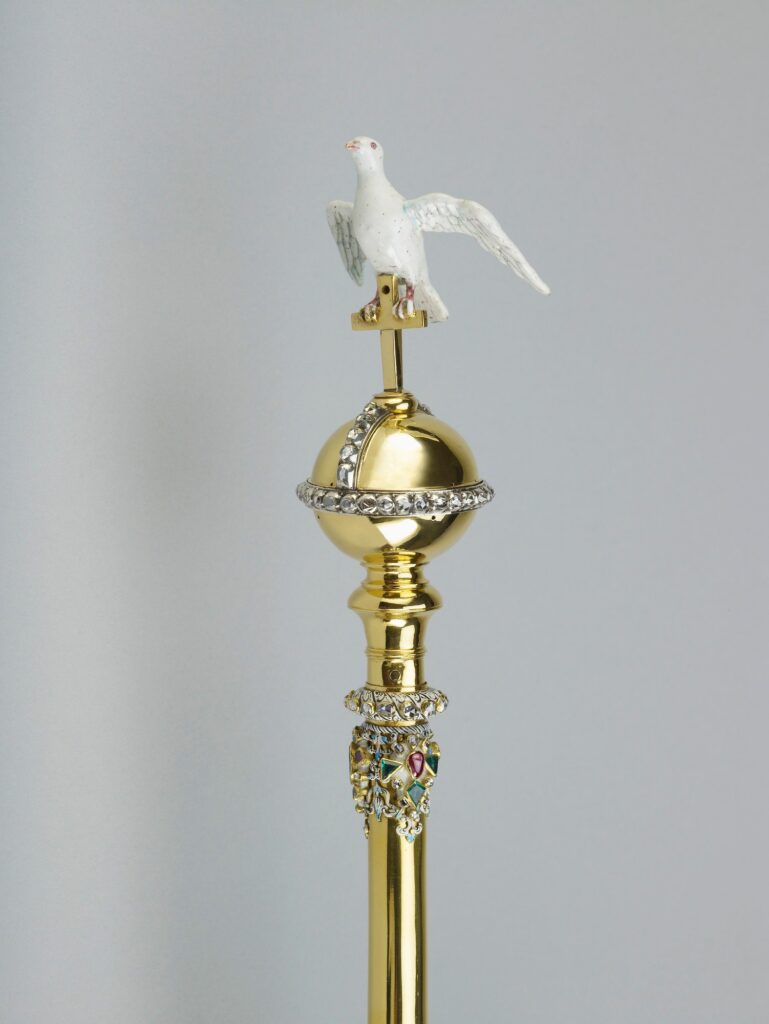
The Sovereign’s Sceptre with Dove is the second scepter used in the ceremony, representing the sovereign’s spiritual role. It dates from 1661 and is made from a gold rod in three sections, mounted with diamonds, rubies, emeralds, sapphires, and spinels. At the top is an enameled dove with outspread wings, which represents the Holy Ghost.
Sovereign’s Orb
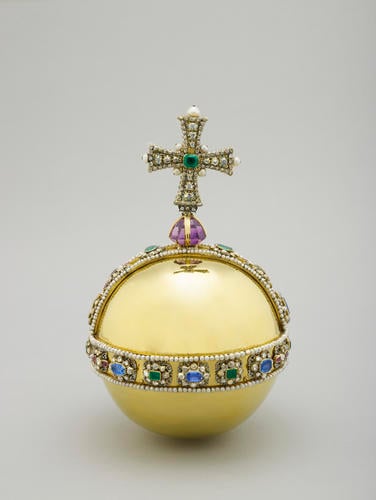
The Sovereign’s Orb is a globe of gold with a cross mounted on top, surrounded by a band of diamonds, emeralds, rubies, sapphires, and pearls with a large amethyst at the summit. It was commissioned for Charles II’s coronation and is a representation of Christian sovereignty.
Coronation Ring

The Coronation Ring, known as “The Wedding Ring of England,” is composed of a sapphire with a ruby cross set in diamonds. It was made for the coronation of King William IV in 1831 and has been worn at every coronation since. It symbolizes kingly dignity.
Swords And Maces
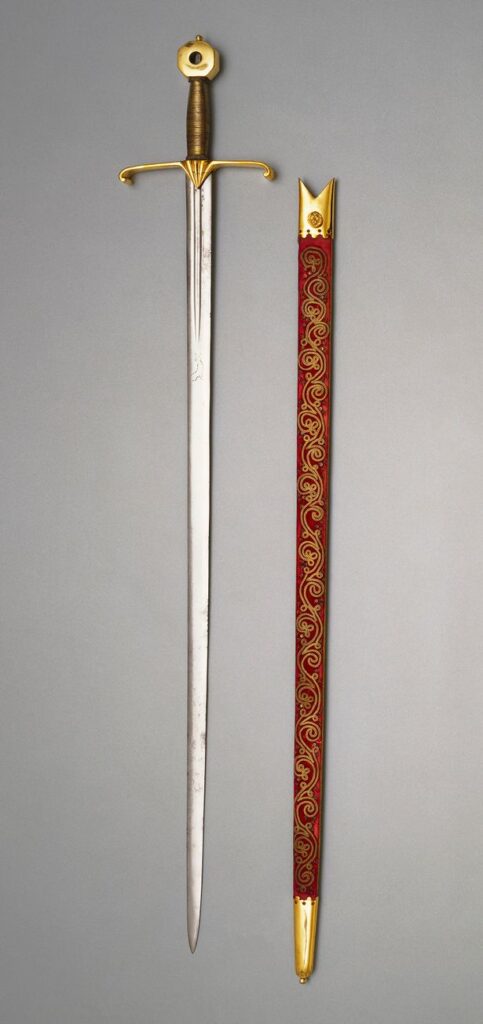
The coronation procession will showcase a variety of swords, each with its own symbolic meaning. The Sword of State, crafted around 1678, represents the royal authority and was previously used in the investiture ceremony of Charles as Prince of Wales in 1969. Other swords that will be featured are the Sword of Temporal Justice, the Sword of Spiritual Justice, and the Sword of Mercy, which were first used in the coronation of Charles I in 1626. Additionally, the bejeweled Sword of Offering, created for George IV’s coronation in 1821, will also play a role in the ceremony.
The procession will also include two maces, which are ceremonial symbols of authority, made of silver gilt over oak and crafted between 1660 and 1695. These maces are typically carried before the sovereign at events such as the State Opening of Parliament.
Ampulla
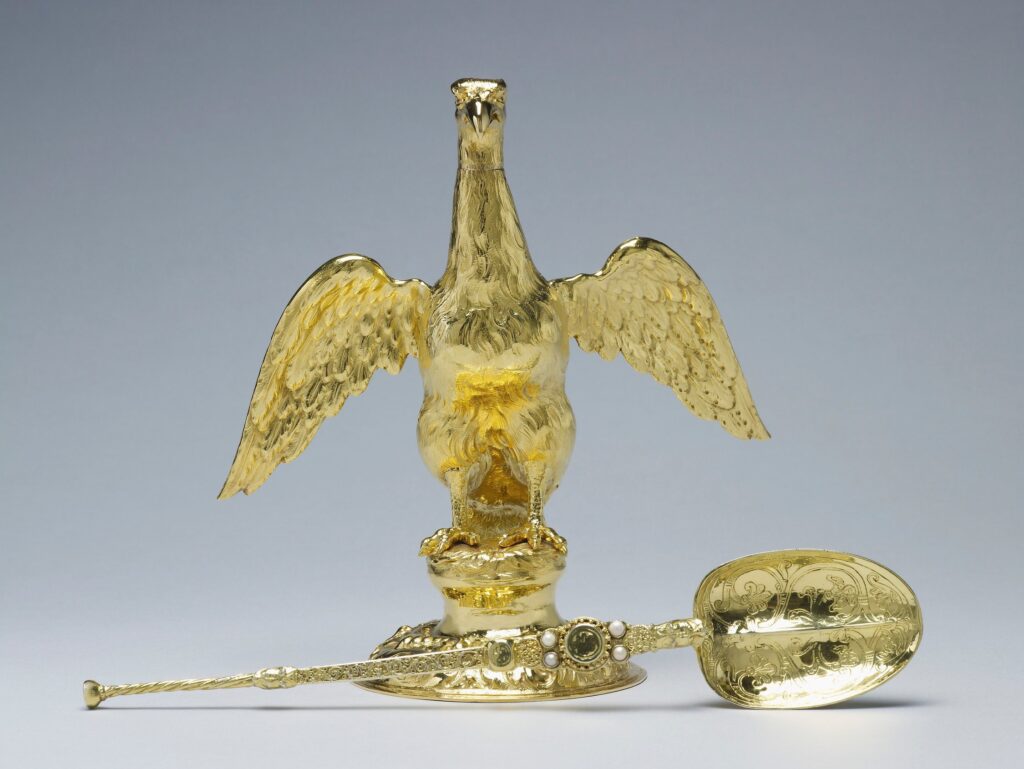
One of the most significant objects used in the coronation ceremony is the golden ampulla, which takes the shape of an eagle and holds the holy oil consecrated in Jerusalem in March. The ampulla, which dates back to 1661, will be used to anoint the king.
Coronation Spoon

Another essential piece of the regalia is the silver-gilt coronation spoon, believed to have been created for Henry II or Richard I in the 12th century. This spoon has been used to anoint every monarch since King James I in 1603.
Bracelets
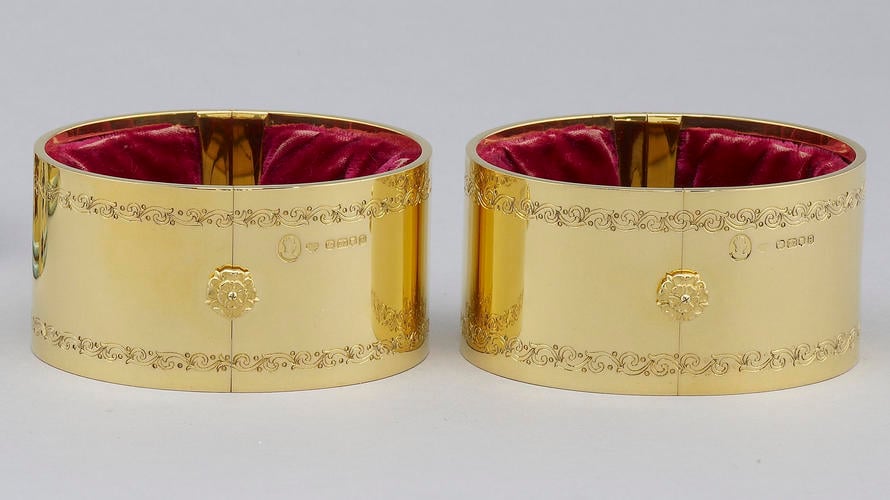
The sovereign will also wear two armills, or golden bracelets, that represent sincerity and wisdom. These armills date back to 1661 and have been worn in every coronation ceremony from King Charles II’s until King George VI’s in 1937. New armills were created for Queen Elizabeth’s coronation in 1953. These bracelets are believed to be linked to ancient symbols of knighthood and military leadership.


